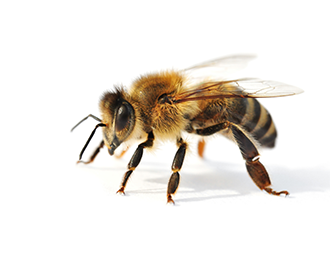Bees are one of the most important pollinators on Earth, playing a crucial role in maintaining biodiversity and supporting food production. Many people are familiar with honeybees and bumblebees, but few realize that there are over 20,000 known species of bees worldwide. These species vary greatly in size, appearance, behavior, and ecological roles.

Bees belong to the order Hymenoptera and are part of the superfamily Apoidea. Their classification is as follows:
Kingdom: Animalia
Phylum: Arthropoda
Class: Insecta
Order: Hymenoptera
Superfamily: Apoidea
Families: Apidae, Megachilidae, Halictidae, Andrenidae, Colletidae, Melittidae, Stenotritidae
Among these families, Apidae is the largest, including honeybees (Apis spp.), bumblebees (Bombus spp.), stingless bees (Meliponini), and carpenter bees (Xylocopa spp.).
As of recent studies, entomologists have identified approximately 20,000 species of bees, with new species still being discovered. These bees are distributed across the globe, adapting to various ecosystems from rainforests to deserts.
| Bee Family | Estimated Species Count | Notable Genera | Examples |
|---|---|---|---|
| Apidae | ~5,700 | Apis, Bombus, Xylocopa | Honeybees, Bumblebees, Carpenter Bees |
| Megachilidae | ~4,000 | Megachile, Osmia | Leafcutter Bees, Mason Bees |
| Halictidae | ~3,500 | Halictus, Lasioglossum | Sweat Bees |
| Andrenidae | ~2,700 | Andrena | Mining Bees |
| Colletidae | ~2,000 | Colletes, Hylaeus | Plasterer Bees, Masked Bees |
| Melittidae | ~200 | Melitta, Macropis | Oil-Collecting Bees |
| Stenotritidae | ~21 | Stenotritus | Australian Desert Bees |
(Source: International Union for Conservation of Nature (IUCN) & National Geographic)
Bees are found on every continent except Antarctica, thriving in diverse ecosystems:
Tropical Rainforests → Home to stingless bees, which produce medicinal honey.
Temperate Forests → Habitats for bumblebees, key pollinators of wildflowers.
Grasslands & Meadows → Rich in solitary bees such as mining bees.
Deserts & Arid Regions → Includes carpenter bees, which adapt to extreme heat.
Urban Areas & Gardens → Increasingly important for honeybee colonies and wild bees.
Bees are highly adaptable, and some species even thrive in human-modified environments, making urban beekeeping an emerging trend.
Bees can be classified into social and solitary species:
| Category | Definition | Examples |
|---|---|---|
| Social Bees | Live in colonies with a queen, workers, and drones. | Honeybees (Apis mellifera), Bumblebees (Bombus spp.) |
| Solitary Bees | Live and nest alone, laying eggs in tunnels or burrows. | Mason Bees (Osmia spp.), Leafcutter Bees (Megachile spp.) |
Interestingly, about 90% of all bee species are solitary, meaning they do not form hives but instead nest in soil, wood, or plant stems.
Bees contribute significantly to pollination, making them vital for ecosystems and agriculture. They are responsible for pollinating:
✅ 75% of global food crops (almonds, apples, coffee, tomatoes, etc.)
✅ 80% of flowering plants
✅ Essential crops for human survival and biodiversity
Without bees, the production of fruits, nuts, and vegetables would drastically decline, leading to food shortages and ecosystem imbalances.
Despite their importance, bees face severe threats, leading to declining populations:
Habitat Loss – Urbanization and deforestation reduce nesting sites.
Pesticides & Chemicals – Neonicotinoids disrupt bee nervous systems.
Climate Change – Alters blooming cycles and food availability.
Parasites & Diseases – Varroa mites are a major threat to honeybee colonies.
Colony Collapse Disorder (CCD) – A phenomenon affecting honeybee hives worldwide.
According to the IUCN Red List, many bee species are now endangered, requiring urgent conservation efforts.
Plant Bee-Friendly Flowers – Lavender, sunflowers, and wildflowers support bees.
Avoid Pesticides – Use organic gardening practices.
Provide Nesting Habitats – Install bee hotels for solitary bees.
Support Sustainable Beekeeping – Buy local, organic honey.
Raise Awareness – Educate others about bee conservation.
Organizations like Bee Conservation Trust and Save the Bees Foundation are leading efforts to protect bee populations worldwide.
With over 20,000 bee species, their diversity is astonishing. From honeybees and bumblebees to leafcutter and sweat bees, these pollinators play a crucial role in global ecosystems, agriculture, and biodiversity. However, habitat destruction, climate change, and pesticides pose serious threats. By supporting conservation efforts, individuals and communities can help ensure that bees continue to thrive for future generations.
What’s your favorite type of bee? Have you spotted any rare species in your area? Share your thoughts below!
animal tags: Apoidea
We created this article in conjunction with AI technology, then made sure it was fact-checked and edited by a Animals Top editor.